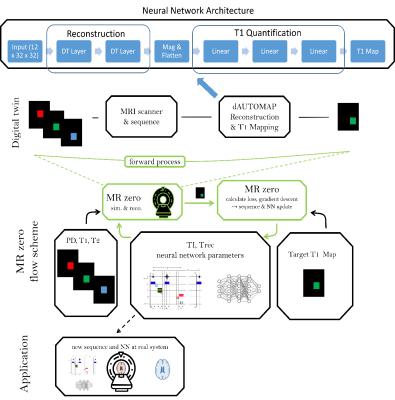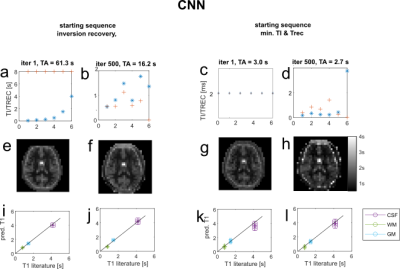Hoai Nam Dang1, Simon Weinmüller1, Alexander Loktyushin2,3, Felix Glang2, Arnd Dörfler1, Andreas Maier4, Bernhard Schölkopf3, Klaus Scheffler2,5, and Moritz Zaiss1,2
1Neuroradiology, University Clinic Erlangen, Friedrich-Alexander Universität Erlangen-Nürnberg (FAU), Erlangen, Germany, 2Magnetic Resonance Center, Max-Planck Institute for Biological Cybernetics, Tübingen, Germany, 3Empirical Inference, Max-Planck Institute for Intelligent Systems, Tübingen, Germany, 4Pattern Recognition Lab, Friedrich-Alexander Universität Erlangen-Nürnberg (FAU), Erlangen, Germany, 5Department of Biomedical Magnetic Resonance, Eberhard Karls University Tübingen, Tübingen, Germany
1Neuroradiology, University Clinic Erlangen, Friedrich-Alexander Universität Erlangen-Nürnberg (FAU), Erlangen, Germany, 2Magnetic Resonance Center, Max-Planck Institute for Biological Cybernetics, Tübingen, Germany, 3Empirical Inference, Max-Planck Institute for Intelligent Systems, Tübingen, Germany, 4Pattern Recognition Lab, Friedrich-Alexander Universität Erlangen-Nürnberg (FAU), Erlangen, Germany, 5Department of Biomedical Magnetic Resonance, Eberhard Karls University Tübingen, Tübingen, Germany
We propose a CNN based end-to-end optimized T1 mapping by using a joint optimization of sequence parameters and neural network parameters for optimal signal acquistion, image reconstruction and T1 mapping.

Figure 1: MR
signal is simulated for given sequence and spin system, reconstruction and T1 mapping
is performed with a NN. The output is compared to the target and gradient
descent is performed to update TI/Trec and NN. Architecture: NN takes as input the complex k-space of all measurements and outputs
a T1 map. The first two convolutional layers act as decomposed transform (DT)
layers for image reconstruction, as described in 2. Magnitude of the output
of the reconstruction part is calculated and feed into a three-hidden-layer multilayer perceptron for T1
quantification.
